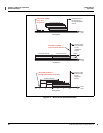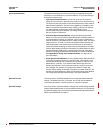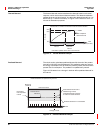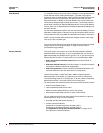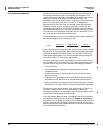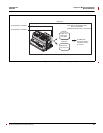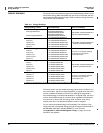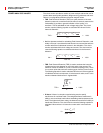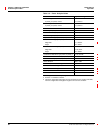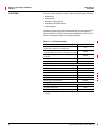
Chapter 4—Metering Capabilities 63230-300-212
Power Analysis Values April 2001
© 2001 Schneider Electric All Rights Reserved
66
The circuit monitor provides a number of power analysis values that can be
used to detect power quality problems, diagnose wiring problems, and more.
Ta bl e 4–5 on page 68 summarizes the power analysis values.
• THD. Total Harmonic Distortion (THD) is a quick measure of the total
distortion present in a waveform and is the ratio of harmonic content to the
fundamental. It provides a general indication of the “quality” of a
waveform. THD is calculated for both voltage and current. The circuit
monitor uses the following equation to calculate THD where H is the
harmonic distortion:
• thd. An alternate method for calculating Total Harmonic Distortion, used
widely in Europe. It considers the total harmonic current and the total rms
content rather than fundamental content in the calculation. The circuit
monitor calculates thd for both voltage and current. The circuit monitor
uses the following equation to calculate thd where H is the harmonic
distortion:
• TDD. Total Demand Distortion (TDD) is used to evaluate the harmonic
voltages and currents between an end user and a power source. The
harmonic values are based on a point of common coupling (PCC), which
is a common point that each user receives power from the power source.
The following equation is used to calculate TDD where I
h
is the magnitude
of individual harmonic components, h is the harmonic order, and I
L
is the
maximum demand load current in register 3233:
• K-factor. K-factor is a simple numerical rating used to specify
transformers for nonlinear loads. The rating describes a transformer’s
ability to serve nonlinear loads without exceeding rated temperature rise
limits. The higher the K-factor rating, the better the transformer’s ability to
handle the harmonics. The circuit monitor uses the following equation to
calculate K-factor where I
h
is harmonic current and h is the harmonic
order:
POWER ANALYSIS VALUES
++
H
2
2
H
3
2
H
4
2
+
x
100%
THD =
H
1
++
H
2
2
H
3
2
H
4
2
Total rms
+
x
100%
thd =
TDD =
Σ
255
I
2
h
I
L
x
100%
h=2
(I
h
2
K =
h )
2
SUM
I
2
rms
SUM



